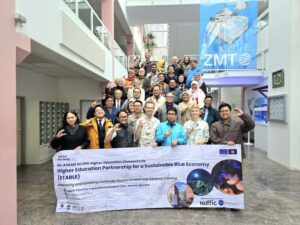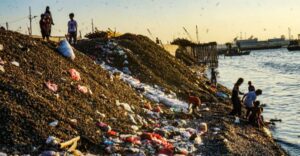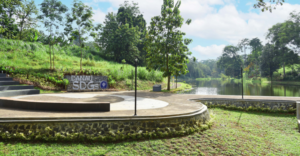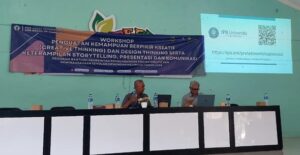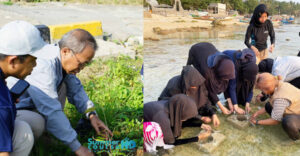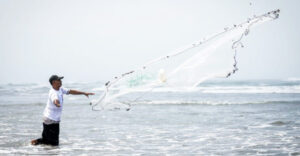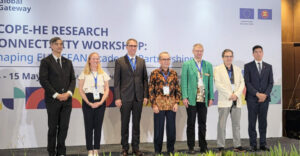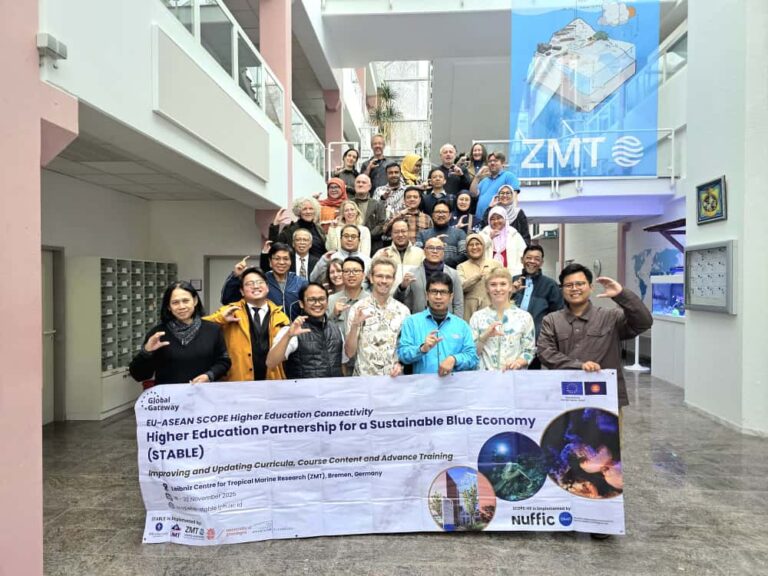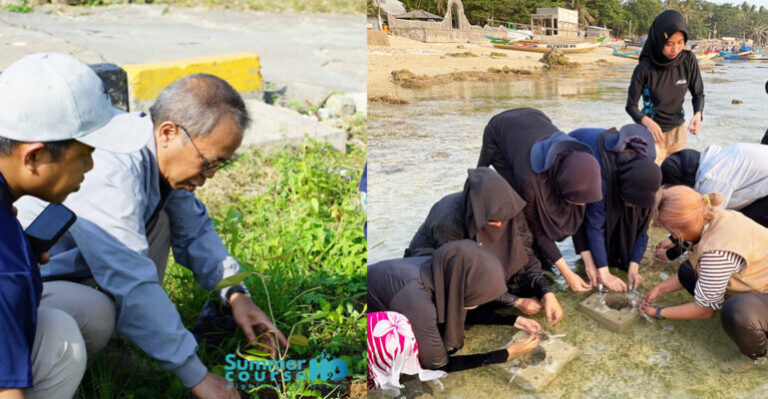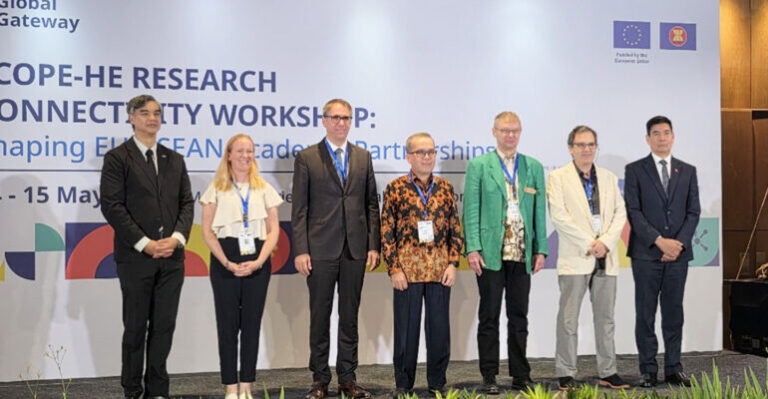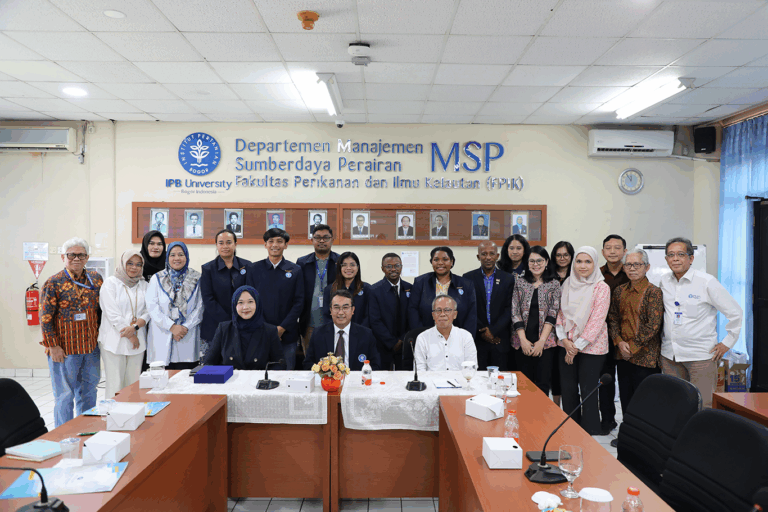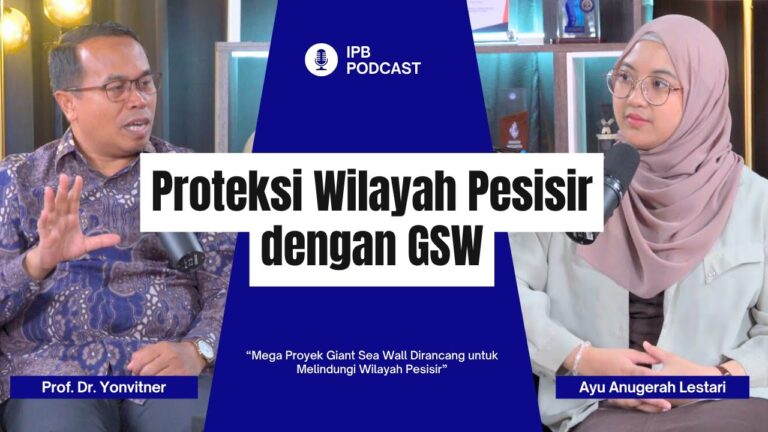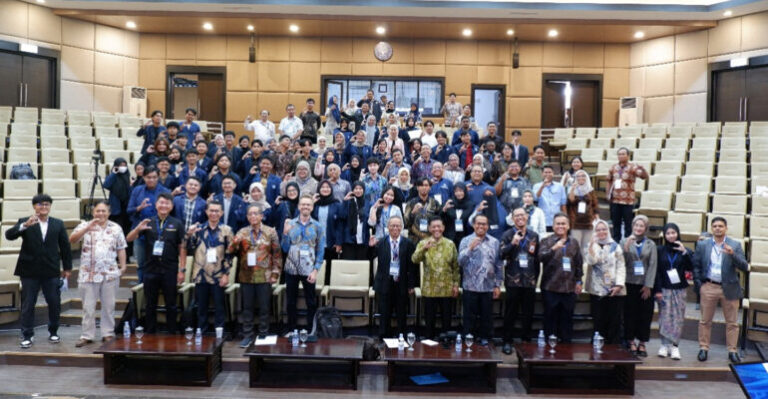IPB University's MSP Department Holds a Webinar on Sustainable Management of Demersal and Crab Fisheries

Department of Aquatic Resources Management (MSP), Faculty of Fisheries and Marine Sciences (FPIK) IPB University held a webinar series with the theme ‘Portraits of Sustainable Demersal and Crustacean Fishery Management’, (15/6). This event was held thanks to the support of the Indonesian Crab Management Association (APRI) and the Indonesian Demersal Association (ADI).
“This activity is expected to enrich the public’s knowledge regarding the potential and problems that exist in the management of demersal and crustacean fisheries in Indonesia,” said Prof. Hefni Effendi as Chair of the MSP IPB University Department in his remarks.
On the same occasion, the Dean of FPIK IPB University, Prof. Fredinan Yulianda said that the potential for fisheries in Indonesia is very large and needs to be mapped, so that this opportunity can be utilized for the welfare of the community.
Researcher from the National Research and Innovation Agency (BRIN), Tri Ernawati, SPi, MSi, in her presentation explained that the provision of data and information on fishery resource stocks throughout the Republic of Indonesia’s Fisheries Management Area (WPPNRI) is one of the priorities in the National Medium Term Development Plan. RPJMN) from 2020 to 2024.
“However, the data collection has stopped since 2022 or since all the research in ministries/agencies has been merged into BRIN. This is quite troubling considering that the provision of stock data and information needs to be carried out continuously and is continuous,” he explained.
Agus Alim Hakim, SPi, MSi who is a PhD Student of the University of Ryukyus reviewed biomolecular applications in determining demersal and crustacean stocks in Indonesia. Agus explained that molecular identification of species is an important thing to do before carrying out a fish stock assessment. This is because the main prerequisite for identifying fishery stocks is the ability to separate different species.
“Molecular species identification can answer the phenomenon of cryptic species and complex species, namely the existence of two or more different species, but classified under the same species name or vice versa. “Hopefully biomolecular research will continue to develop considering that demersals and crustaceans are groups of animals that are able to move across WPPs, thus allowing crossbreeding between demersals or crustaceans in one WPP and another WPP,” he explained.
Another guest speaker, Dr. Irfan Yulianto from the Fisheries Resource Center of Indonesia (FRCI), the Rekam Nusantara Foundation, explained the results of research on snapper and grouper data collection in Indonesia by emphasizing the importance of good fisheries data collection. Good data can produce good recommendations, and vice versa.
“We have developed a citizen-science based fisheries data acquisition initiative called FISH or Fisheries Data Collaboration Initiative. The fisheries data can be accessed by the public, and there are opportunities for cooperation with the government and academics to conduct research and scientific publications,” he explained.
Professor of FPIK IPB University, Prof. Sulistiono explained the results of mud crab research in various regions in Indonesia, where the spawning season and mature size (mature gonads) of mud crabs varied. He also examined the rules for fishing for mud crabs in the Minister of Maritime Affairs and Fisheries Regulation No 16 of 2022.
“The carapace size of 12 cm is applied to all mangrove crab species, even though the adult size of each species is different. This ecobiological research and data is very important as a basic reference in making fisheries policies,” he said
Sources: IPB News
